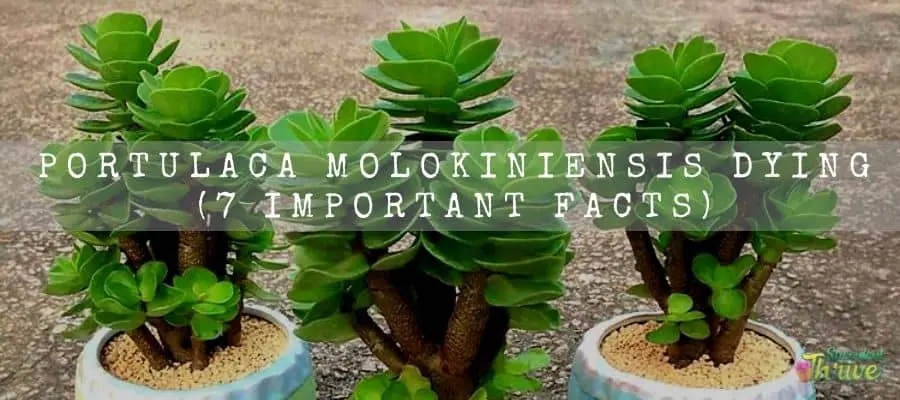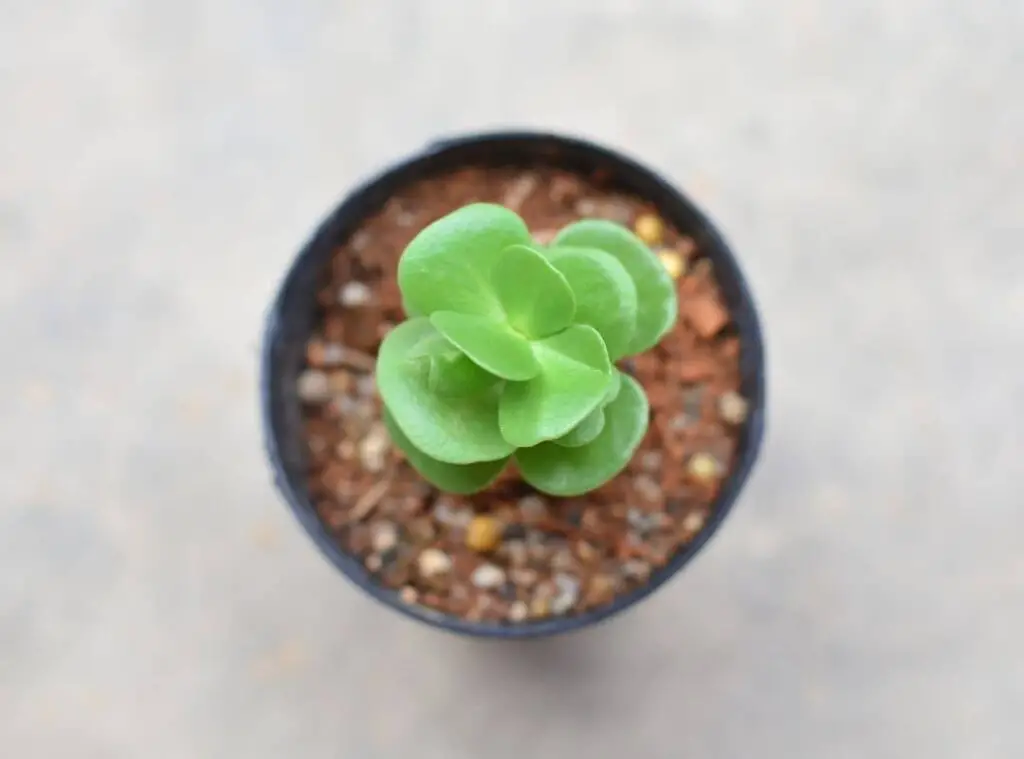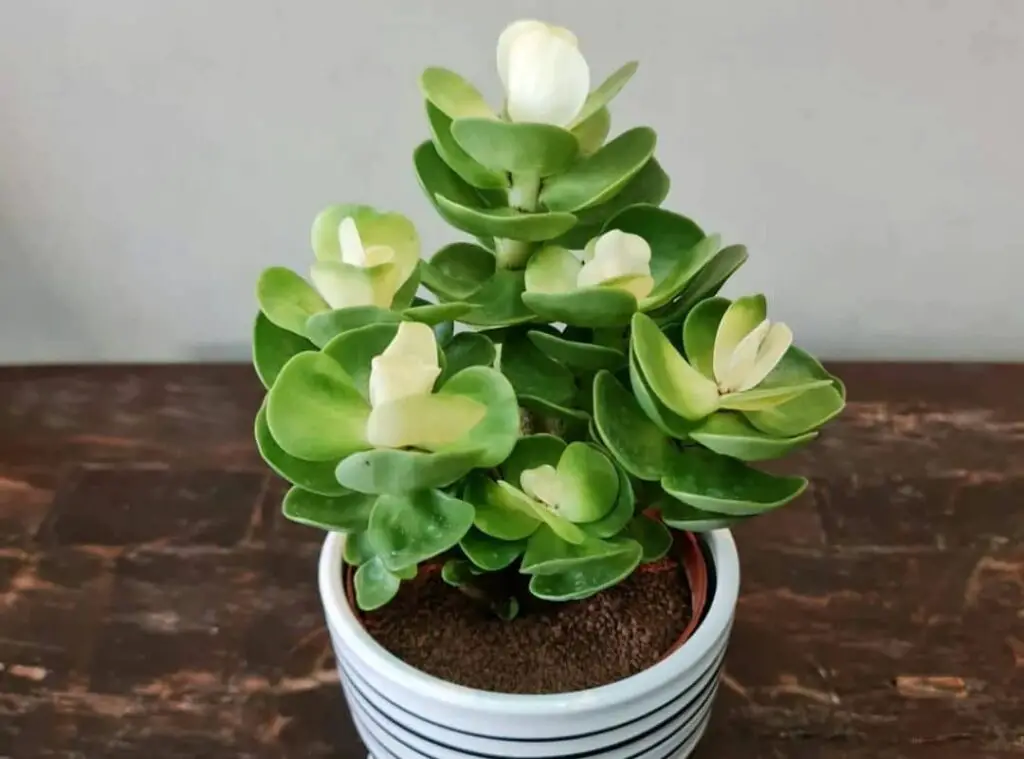If you are a proud owner of Portulaca molokiniensis and if you are searching for an answer for “why Portulaca molokiniensis Dying” you come to the right place.
Chances are that you may have come across diseases such as fungal infections, root rot, leaf spot , stem rot while growing Portulaca.
They may constantly go through these conditions particularly if you fail to provide the right growing conditions.
If there are favorable conditions for these, you may constantly have to deal with these. So, this article will help you to educate yourself on the diseases you may come across when handling these plants.

01. Portulaca molokiniensis fungal diseases
Portulaca molokiniensis plants may suffer from gray mold which is a commonly spotted fungal disease. This could bring adverse effects on almost all the plant parts except for the roots system.
Once they go through this condition, you could see pale gray or silvery spots forming on them. Further you could see them carrying coatings which would form on the tissues.
In fact, if you expose them to prolonged periods of moisture whilst making them starved for sufficient sunlight, it will easily pave the way for this condition.
However, when it is dry, you could spot them as dust and further they will be air bone too.
Once this condition gets severe, you could see the gray coating turning yellow in color. Eventually it would turn brown and end up perishing.
Unfortunately, there is no way you could remedy these plants and the best thing would be to get rid of the plants.
Further keep in mind that you should never compost them as it would enhance the probability of increasing the pathogens.
02. Portulaca molokiniensis root rot
Root rot could be fatal particularly on the young plants. Once the Portulaca molokiniensis plants suffer from this condition you could see carrying white mold also.
Besides, you will see how their top foliage is also stunt and become wilt too. Furthermore, Portulaca molokiniensis plant leaves which are in the base would show signs of brown simply rot in splotches too.
If you keep growing the plants in waterlogged soil and if you had grown them in poor draining pots, those conditions would pave the way for this.
Besides the poor aeration would also result in this condition. To remedy this, you could cut back on watering and allow them to wither first.
However, if the rot has taken place on a severe level , it is very unlikely that you could save them.
03. Black Stem disease on Portulaca.
Portulaca molokiniensis plants may also suffer from black stem disease. Again, the culprit for this condition would be humid and moist conditions.
They would provide hospitable conditions for the fungus to feast on them. To prevent them occurring you could consider growing them slightly off the ground.
Besides, you need to water them at minimum without over-watering. This could be troublesome for the rest of other plants as well.

04. Portulaca molokiniensis overwatering
Over watering could be one of the major concerns for these plants as it could lead to so many adverse effects on the plants.
Portulaca molokiniensis plants used to grow in hot and arid conditions and they would thrive well with moderate water levels.
If you end up supplying water in excess for them, you could see their leaves becoming soft and mushy.
Further they would be more like translucent too. Further chances are that they may tend to look a little shriveled too.
One might think that plants are lacking adequate water whereas it is not. In fact, it could also be a sign of over watering too. Further you would see their leaves tend to look unhealthy as well.
In addition to that , their leaves would become black in color due to over watering. As a result of this, they would suffer from root rot as well. Literally if you end up over watering the plants, you will have to deal with so many unwanted adverse effects.
Not only that but also, Portulaca molokiniensis plants would tend to shade their leaves due to over watering.
Once they become overly saturated, they would end up swelling and start to drop on the ground.
Further if you want to ascertain whether the plants are suffering from root rot, you could simply touch the leaves and see as the leaves would tend to drop at the slightest touch to the plants.
05. Portulaca molokiniensis underwatering
Under watering could also badly affect the Portulaca molokiniensis plants. Once they go through under watering you could see their leaves become wrinkled and shriveled.
Moreover, they would tend to look droopy and wilted too. The more they were deprived of water the more they would become wrinkled and shriveled.
If the Portulaca molokiniensis plants are suffering from under watering, you could spot them carrying dried dead and brown leaves.
Once the plants run short of sufficient water, they would tend to develop dried dead leaves particularly at the base of the plants.
Further there could be chances where they tend to drop the leaves to conserve the remaining water.
Portulaca molokiniensis leaves would be soft to the touch when they lack water. Besides, the leaves would be flat too.
Portulaca molokiniensis leaves would not carry the plumpness and firmness they usually have. However, no matter all these, if you water them once or twice it would help them to revive and get back to the normal growth pattern of the plants.
06. Portulaca molokiniensis sunburn.
Portulaca molokiniensis plants may suffer from sunburns quite often if you expose them to direct sunlight for too long.
Literally if you overexpose the plants for direct sunlight, its UV light would badly affect the plants tissue structure of the plants.
further they may also carry wilted and drooping leaves due to sunburn. The leaves would be more crispy.
Furthermore, what is more concerning is that the damaged tissues will not get back to their normal shape irrespective of what you do to recover them.
Ideally you need to place the plants somewhere shady when there are high levels of sunlight. Simply you need to avoid exposing them to direct sunlight from 11:00 a.m. to 03:00 p.m.
The over exposure for sunlight would result in yellow and red blotches as well. Further they would remain on the plants forever despite what you do to get rid of them.

07. Portulaca molokiniensis dried out
If you spot the majority of the leaves at the bottom part are dry you may have to enhance watering them.
That said, dried leaves are a part of their natural growth too. In fact, it is quite natural for the Portulaca molokiniensis plants to develop new leaves while their older leaves wither.
If you spot one or two dry leaves you could ignore that. If the dried leaves make the plants look aesthetically ugly , you could just remove them from the plants.
However when you remove the dried leaves ensure that they are all dead and try to do it when they are in the pots.
Conclusion
To conclude, Portulaca molokiniensis plants are such amazing spectacular plants which nobody would ever hesitate to grow. So I hope the above mentioned information would be useful to you and that you are confident when dealing with these issues.
Read Next : Beautiful Portulaca Molokiniensis Flower
